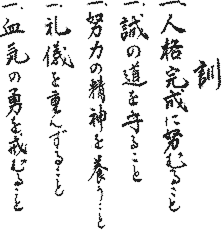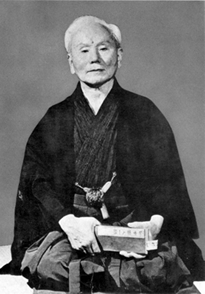About Karate
This section explains a quick history of karate, an outline of the different styles of karate and a more detailed guide into the features and benefits offered by the style of karate taught at Colchester JKA. It is by no means an exhaustive guide to karate but should provide a useful introduction to those new to this fascinating martial art.
What is Karate-do?

Karate is an empty-handed fighting art that has been developed through long years of history and tradition.
Its ultimate goal lies not in winning or losing, but in fostering spiritual and physical strength through serious practice, and in trying to achieve an overall balance as individuals.

History
Like most other modern martial arts Karate has grown and evolved from various influences over hundreds of years and yet some fundamental elements stay the same. Part of the enjoyment of karate is learning about its rich heritage and interesting past.
It is said that karate was first derived from the fighting style taught to Shao Lin monks in India from where it travelled to China and then to the Okinawan islands of Japan. Karate was then brought to mainland Japan by ‘the father of modern karate’, Gichin Funakoshi.

Martial Arts
Karate is just one of several martial arts including Aikido, Judo, Kung Fu, Kendo, Tai-Chi and Jiu-Jitsu.
Features and Benefits

Students of Karate learn punching, blocking and kicking techniques along with respect and control. Benefits such as feeling fitter, being more flexible, and increasing self-confidence.
Training

A typical session will include a 10 minute warm-up and stretching session then some or all of the following three fundamental elements of karate training:
Kihon (Basic techniques)
Basic techniques include various different punching, kicking and blocking techniques either performed on their own or in combination.
Kumite (Sparring)
To begin with all students learn simple sparring techniques within a rigidly structured format gradually becoming more complex and evolving into freestyle fighting.
Kata
Kata are set forms, sequences of anything from 20 to 80 techniques which in some ways resemble both a fight against multiple invisible opponents and a graceful dance. For the first few grades students are expected to learn one kata per rank starting with the simplest combination of punching and blocking to complex sequences involving all sorts of punching, kicking, blocking, throwing and grappling techniques.
Strenuous sessions will usually conclude with a warm-down.

